How to Get Rid of Cat Dandruff: 7 Helpful Methods

Updated on
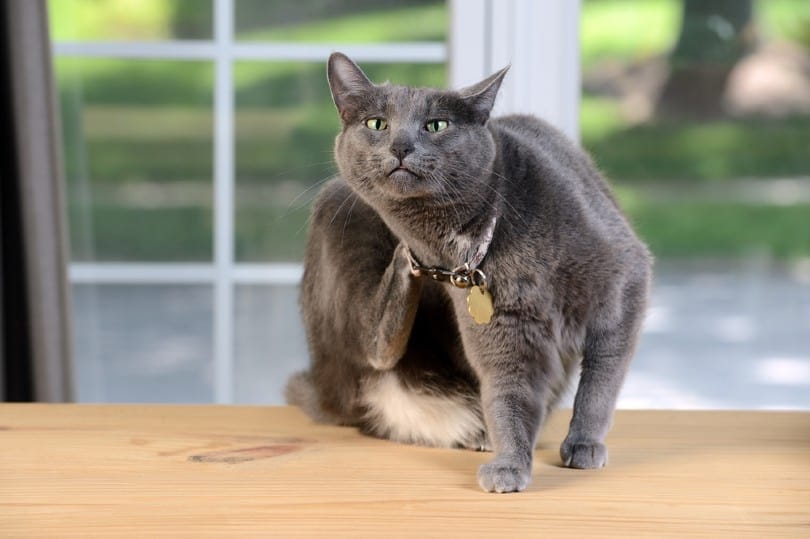
Dandruff can be an embarrassing issue that is difficult to get rid of. Unfortunately, even our furry friends aren’t immune to the itchy, flaky skin of dandruff. There are lots of ways to get rid of dandruff on your cat, but each method is going to be dependent on the cause of the dandruff. For example, if your cat has dandruff because of a fungal infection on the skin, then a diet change isn’t going to be particularly helpful. Here are some of the causes of dandruff in cats and helpful methods to clear up the dandruff.
The 7 Helpful Methods to Clear Up Your Cat’s Dandruff
1. Visit the Vet
If your cat develops dandruff, the first thing you should do is have them checked over by a vet. Your cat’s vet will be able to determine if the dandruff is being caused by a medical condition, allergy, parasite, or something else. Lab work can identify conditions like hyperthyroidism and diabetes, while a thorough physical exam can identify skin infections and even pain or stiffness that may be preventing your cat from properly grooming itself.
2. Dietary Changes
Switching your cat to a higher quality diet or a diet with more fatty acids can be beneficial to your cat’s skin. If your cat is suffering from food allergies, your vet may have you trial foods with different types of proteins. Proteins are one of the most common food allergies in cats and sometimes, a novel protein needs to be introduced. So, if your cat’s current diet is chicken based, your vet may have you swap the diet to something that is fish based or that contains an unusual protein, like rabbit or kangaroo. Food trials need a minimum of 6 – 8 weeks to see a difference, so don’t try a new food for a few days and give up on it if you don’t immediately see improvement.
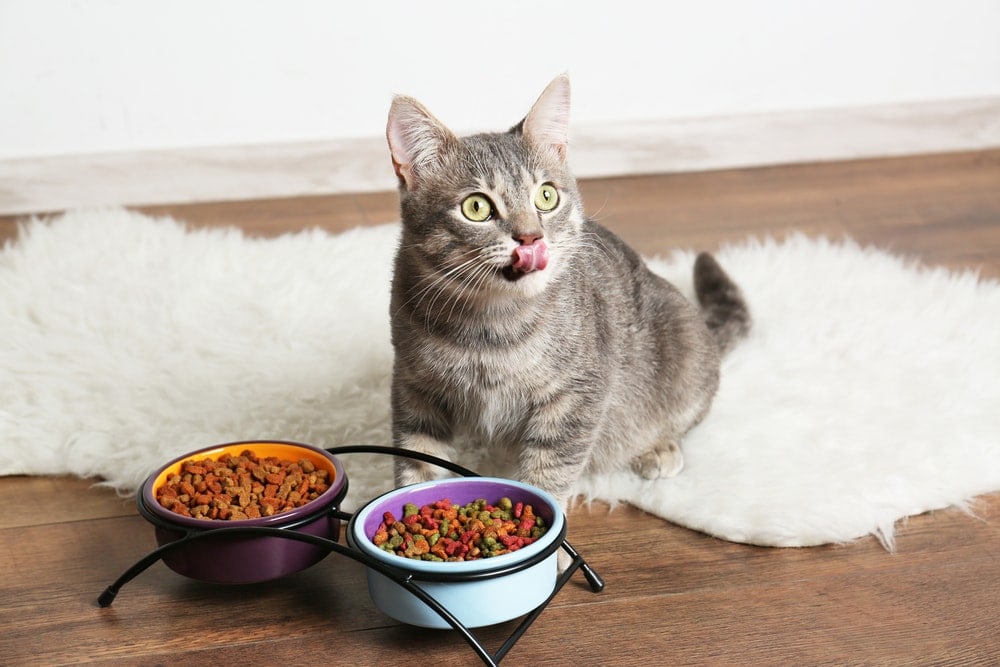
3. Supplementation
Fatty acid supplementation can be an easy and affordable way to improve your cat’s skin and coat health. There are many products on the market that are made for this purpose, and they are sourced from a variety of plants and animals, including salmon, sardines, hemp, and flax seeds, which gives you plenty of options, even if your cat has food allergies. When adding fat supplements to your cat’s diet, start slowly and at low doses to avoid stomach upset.
4. Proper Grooming
If your cat is struggling to properly groom itself, then you’ll need to pick up the slack and begin regularly brushing your cat. Choose a brush that is appropriate to the type of coat that your cat has. If your cat has become matted, then a vet or groomer visit may be necessary. If your cat requires bathing, talk to your vet about options for supporting healthy skin while still bathing your cat as needed.
5. Topical Treatments
Topical skin treatments may be necessary to clear up your cat’s dandruff. These can be topical medications or shampoos from the vet, but these can also be topical skin supplements that are formulated to keep the skin moisturized and coated with proper levels of healthy oils.
6. Increase Moisture
If your cat is one of the many cats that doesn’t drink enough water, finding ways to interest your cat in taking in more fluids can help with dandruff issues. This can be done by providing a water fountain or increasing the amount of wet food your cat receives. You can even add water to your cat’s food to increase water intake. If your cat’s environment is too dry, then increasing moisture in the environment can help significantly. The easiest and most cost-effective way to do this is by adding a humidifier to the drier parts of your home or the areas your cat is most likely to spend time.
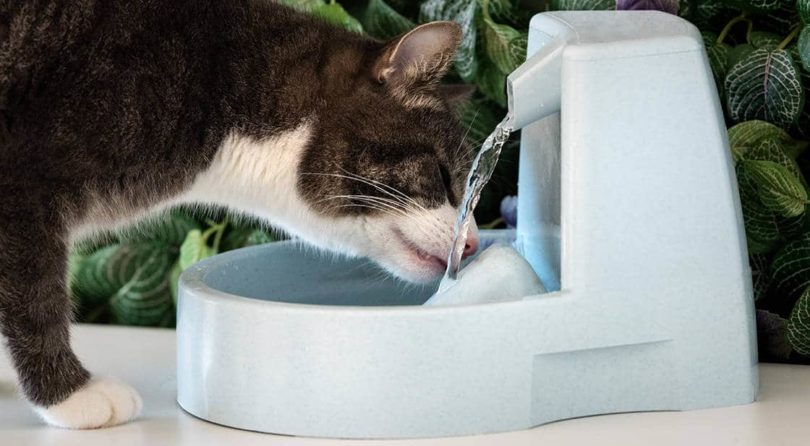
7. Treat and Prevent Parasites
Identifying parasites and treating them quickly can start the process of healing your cat’s dandruff. Talk to your vet about cat safe parasite prevention because not all medications are safe for cats. Even indoor cats should be given regular flea prevention, though, because fleas and other parasites can get into the home on your clothes or other pets, and then reproduce quickly and in large numbers.
What Causes Dandruff in Cats?
1. Allergies
The most common allergy symptoms in cats are skin irritation, rashes, and flaky skin. Cats can have allergies to things in their diet or their environment. Cats can be allergic to anything that humans can be allergic to, including grasses, mold, bites from certain insects, fish, chicken, and soy. Cats can even be allergic to human dander!
2. Skin Infections and Disorders
While there are multiple types of infections and skin disorders that can cause flaky skin, the most common in cats tends to be seborrhea. This is a condition that involves the overproduction of sebum from the sebaceous glands. The excess sebum can lead to buildup on the skin that becomes itchy and flaky. Other skin issues that can cause flaky skin in cats include fungal infections and epidermal collarettes.
3. Underlying Medical Conditions
Many medical conditions can lead to dandruff for your cat, so it’s important to get a vet checkup if your cat develops dandruff. The most common underlying medical conditions that lead to dandruff in cats are diabetes and thyroid disease.
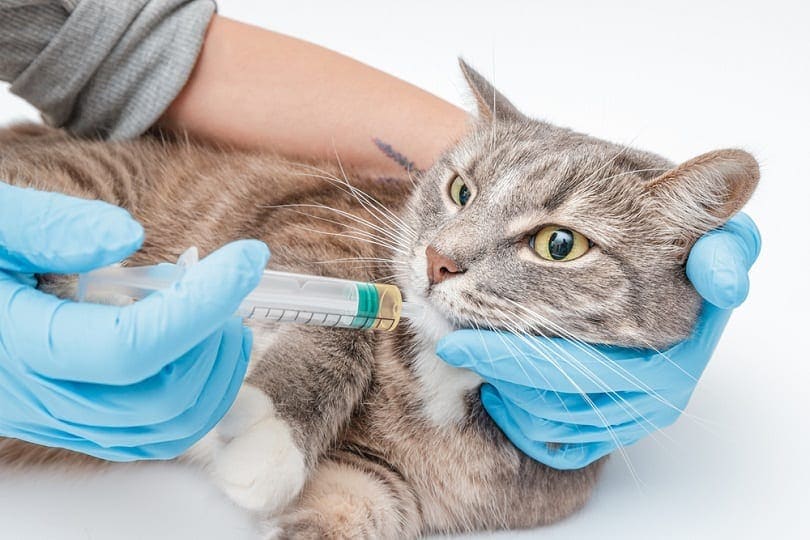
4. Nutritional Deficiencies
Diets lacking enough fatty acids can lead to flaky skin in cats. Fatty acids are a healthy part of a balanced diet and help keep the skin and coat lubricated with natural oils. Look for foods that contain fatty acids, like omega-3 and omega-6 fatty acids.
5. Under Grooming
Cats that are obese, elderly, or sick will often groom themselves less than needed. This can lead to dandruff from the lack of normal grooming. When cats groom themselves, they remove loose skin flakes, fur, and debris, as well as helping to distribute the natural oils on the skin. Cats that are under grooming end up with a buildup of these things that can lead to matting, rashes, and itchy, flaky skin.
6. Over Bathing
Most cats don’t need baths on any type of a regular basis, but some cats do require regular bathing for medical or hygiene reasons. Bathing your cat help keep the skin and coat healthy, but if you are over bathing your cat, then you may be doing more harm than good. Soaps and shampoos can strip the natural oils from the skin and coat, leading to excessive dryness and dandruff.
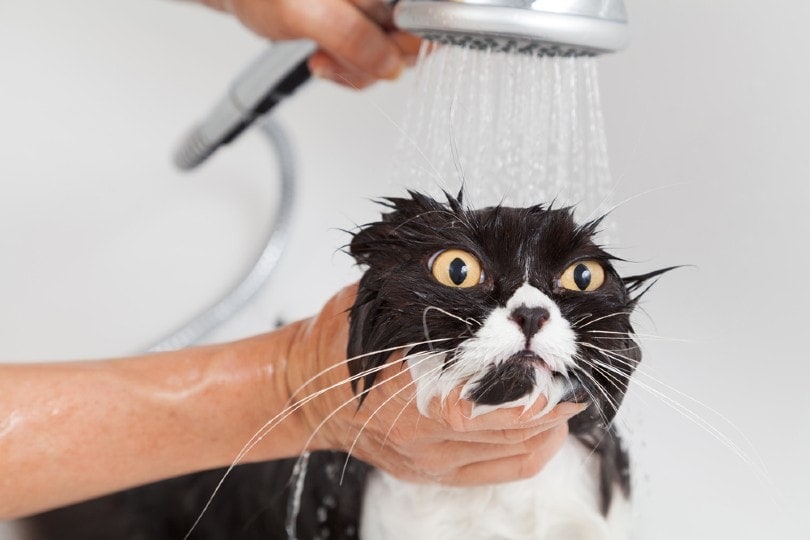
7. Dehydration
It isn’t unusual for cats to not drink enough water, so many cats can easily become dehydrated. However, dehydration can also be caused by medical problems, limited access to water, and environmental factors, like excessively dry air, which is especially common in wintertime and arid climates.
8. Parasites
Even if your cat isn’t allergic to fleas, mites, or other parasitic insects, there can still be uncomfortable effects on the skin from these invaders. Fleas are the most common skin parasite seen on cats. Cats with fleas and other topical parasites can be seen excessively scratching and grooming. The coat often begins to look patchy and dull, and the skin can develop dandruff.
Final Thoughts
Caring for your cat’s dandruff usually is not an overly complex problem to care for, but you do have to identify the cause of the problem to properly care for it. As with any notable changes in your cat’s appearance or behavior, you should start by seeing your cat’s vet and work outward from there for solutions. It’s not unusual for dandruff to be a part of a bigger problem, like related to a secondary infection caused by a more serious medical problem. This means that it’s not unusual for there to be multiple solutions that should all be used to care for your cat’s dandruff. Mix and match these seven methods to caring for your cat’s dandruff to find the perfect combination that works for your cat.
Featured Image Credit: Susan-Santa-Maria, Shutterstock











